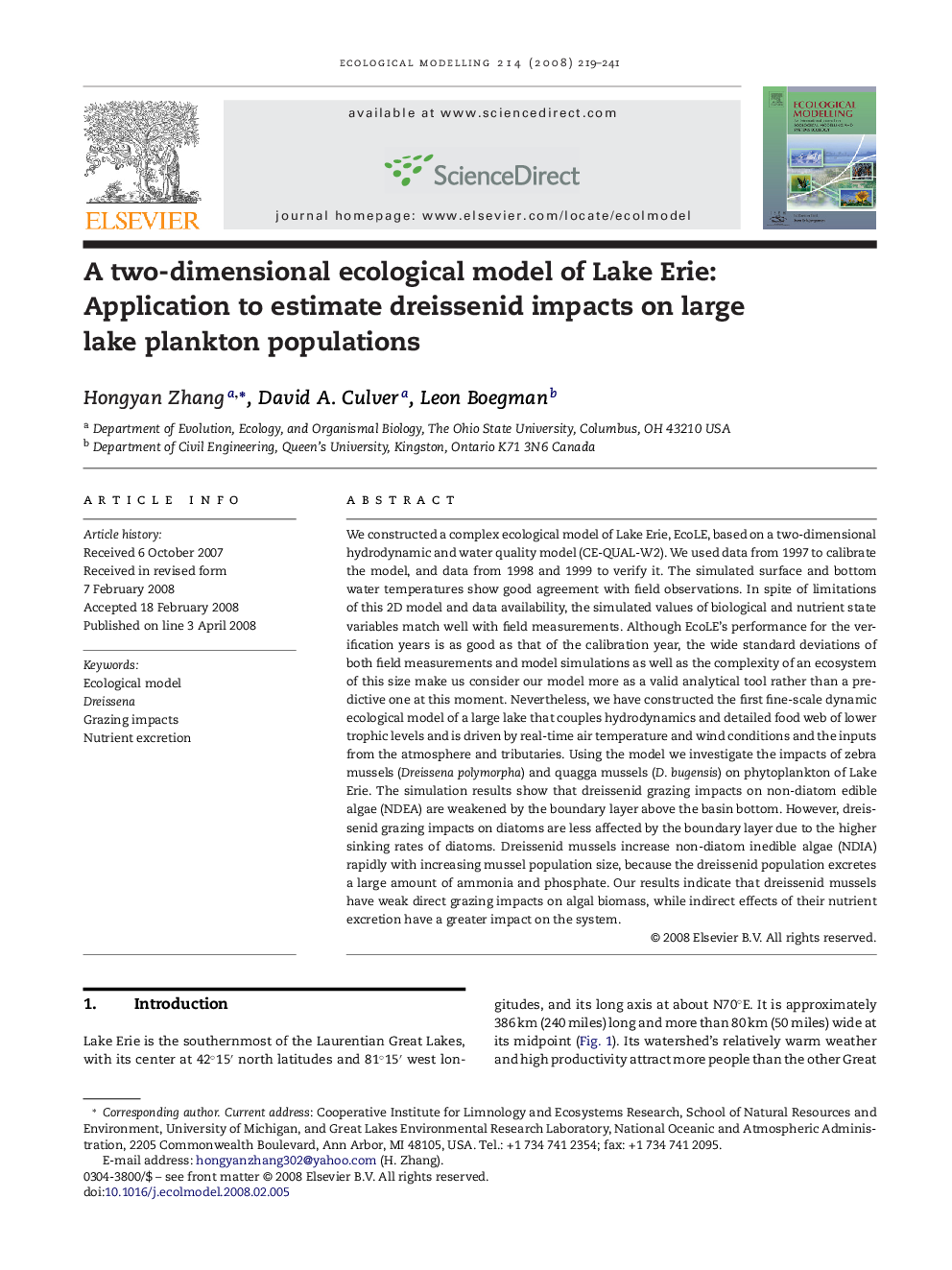| کد مقاله | کد نشریه | سال انتشار | مقاله انگلیسی | نسخه تمام متن |
|---|---|---|---|---|
| 4378167 | 1617533 | 2008 | 23 صفحه PDF | دانلود رایگان |

We constructed a complex ecological model of Lake Erie, EcoLE, based on a two-dimensional hydrodynamic and water quality model (CE-QUAL-W2). We used data from 1997 to calibrate the model, and data from 1998 and 1999 to verify it. The simulated surface and bottom water temperatures show good agreement with field observations. In spite of limitations of this 2D model and data availability, the simulated values of biological and nutrient state variables match well with field measurements. Although EcoLE's performance for the verification years is as good as that of the calibration year, the wide standard deviations of both field measurements and model simulations as well as the complexity of an ecosystem of this size make us consider our model more as a valid analytical tool rather than a predictive one at this moment. Nevertheless, we have constructed the first fine-scale dynamic ecological model of a large lake that couples hydrodynamics and detailed food web of lower trophic levels and is driven by real-time air temperature and wind conditions and the inputs from the atmosphere and tributaries. Using the model we investigate the impacts of zebra mussels (Dreissena polymorpha) and quagga mussels (D. bugensis) on phytoplankton of Lake Erie. The simulation results show that dreissenid grazing impacts on non-diatom edible algae (NDEA) are weakened by the boundary layer above the basin bottom. However, dreissenid grazing impacts on diatoms are less affected by the boundary layer due to the higher sinking rates of diatoms. Dreissenid mussels increase non-diatom inedible algae (NDIA) rapidly with increasing mussel population size, because the dreissenid population excretes a large amount of ammonia and phosphate. Our results indicate that dreissenid mussels have weak direct grazing impacts on algal biomass, while indirect effects of their nutrient excretion have a greater impact on the system.
Journal: Ecological Modelling - Volume 214, Issues 2–4, 24 June 2008, Pages 219–241